Midway Geyser Basin, Rabbit Highland Hot Springs
Page 1 2
The name "Rabbit Highland Hot Springs" is used by T. Scott Bryan for a group of springs located on hilltops and in valleys several hundred meters east of the Rabbit Creek Hot Springs. On the other hand, the RCN database files all springs in the area as "Rabbit Creek Hot Springs". I prefer the first version because it leads to a more transparent structure here. But below you will see that also the name "Veggie Soup Group" would fit very well.
The Rabbit Highland Hot Springs are different from all other thermal areas in Yellowstone. Neither geysers nor superheated blue pools are to be found within the group. Instead, it comes with a series of vividly colored, moderately tempered springs of a unique appearance. Unquestioned stars of the Rabbit Highland Group are four vibrant brick-red pools, often called "Tomato Soup Pools". Strictly speaking this name is assigned to only one of them, though.
If you hike to the Rabbit Highland Springs, you should stick to the safety rules and regulations for backcountry thermal areas. Furthermore, you should already exactly know where to find the features you are looking for. Many of them are hidden in dense forest and impossible to spot from a distance. (Update: The following pictures were made on hikes in August 2015. The Rabbit Creek Drainage is one of the backcountry thermal areas which have been closed to public entry by the NPS since 2016.)
Starting from Scaffold Spring, a short hike of approximately 250 m (820 feet) in southeastern direction, uphill and through thick wood, gets you to the northernmost of the orange pools, designated as MNN020. Especially when direct sunlight hits the surface, the brick red color starts to shine in a nearly unbelievable intensity. Earlier photos, for example from the year 2009, show the pool in a bluish clouded state, so the discharge of iron oxide particles into the water and the shift to an intensely orange color must have occured after 2009.
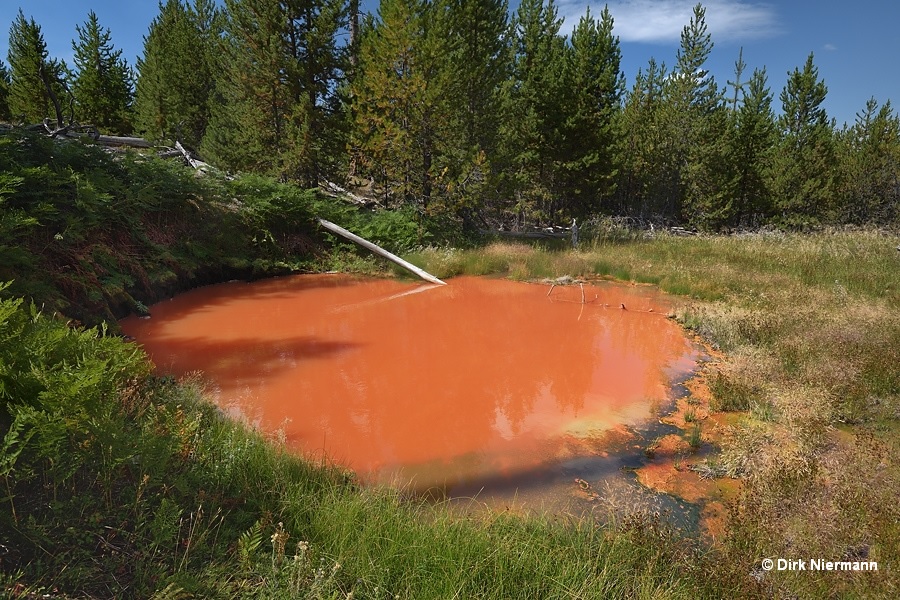
The RCN database lists also its much larger, terracotta hued neighbor under the same code MNN020. In contrast to the more vividly colored pools it exhibits a higher temperature around 87 °C (189 °F) and a stronger acidity (pH 3). Since most of the few people visiting this area come for the "Tomato Soup Pools", this one got the nickname "Cream of Tomato Soup Pool".
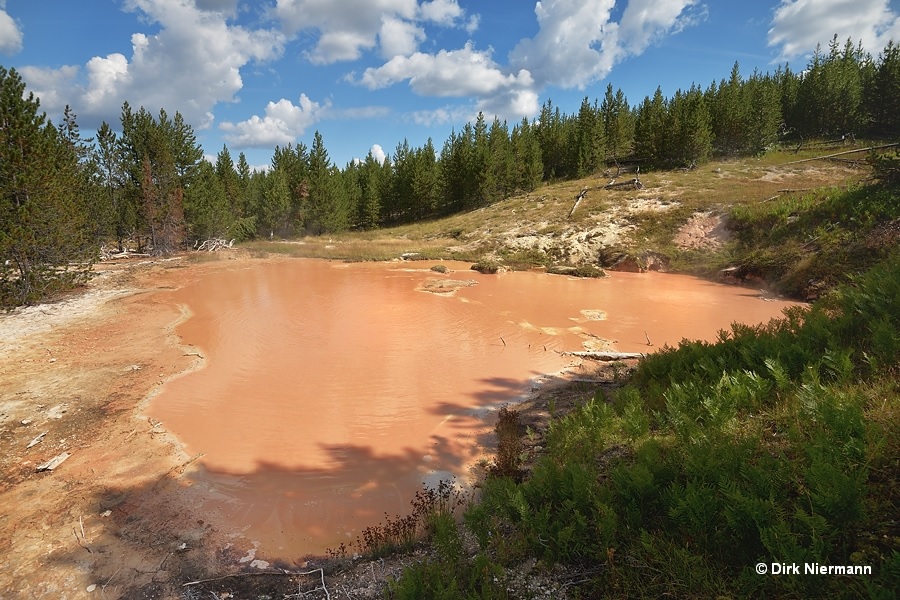
50 m (165 feet) farther southeast the actual Tomato Soup Pool shows up, at least according to the naming by the Yellowstone National Park Research Coordination Network RCN. Tomato Soup Pool comes with a temperature of approximately 77 °C (170 °F) at an acidity of pH 4.5. This makes it somewhat hotter than a tomato soup served in a good restaurant, but the acidity may even be equal. I have no idea about the flavor, and one should beware of tasting water of thermal pools, of course.
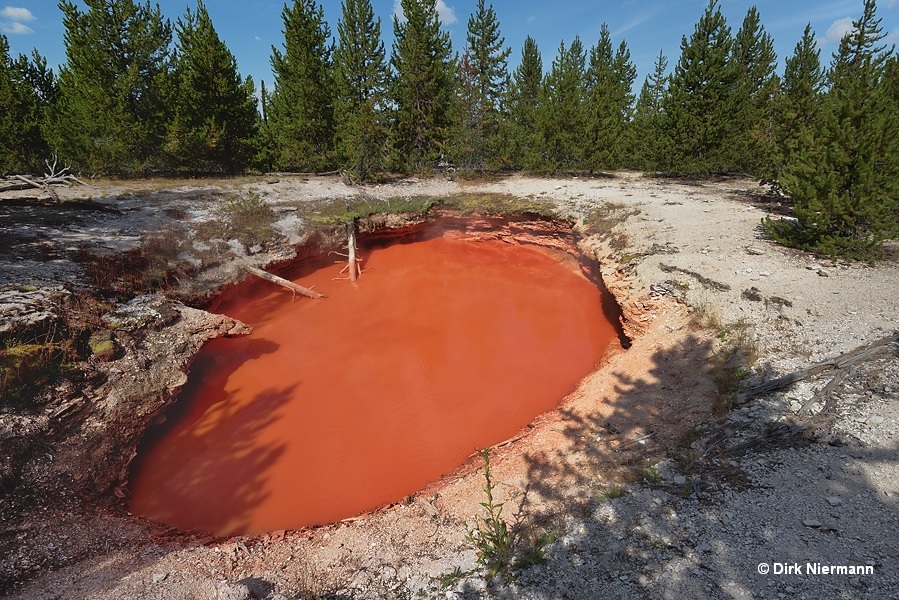
Despite the fact that I was unable to detect evidence in scientific reports, it seems very likely that the color is not only caused by colloidal iron oxide particles, but there is also a contribution from silica particles which stabilize the colloid and enhance the brightness of the red hue.
It takes another 50 m in southern direction to reach the next orange spring. On our visit pool MNN032 exhibited a rather low water level and exposed a dried up belt of dark red mud. Otherwise, its color was the most intense of all "Tomato Soups". Although I cannot determine for certain it looks like this spring may be Brick Pool, which can be seen in a photo from 1960 by George Marler in Yellowstone's Photo Collection. No other of the springs shows such a bank.
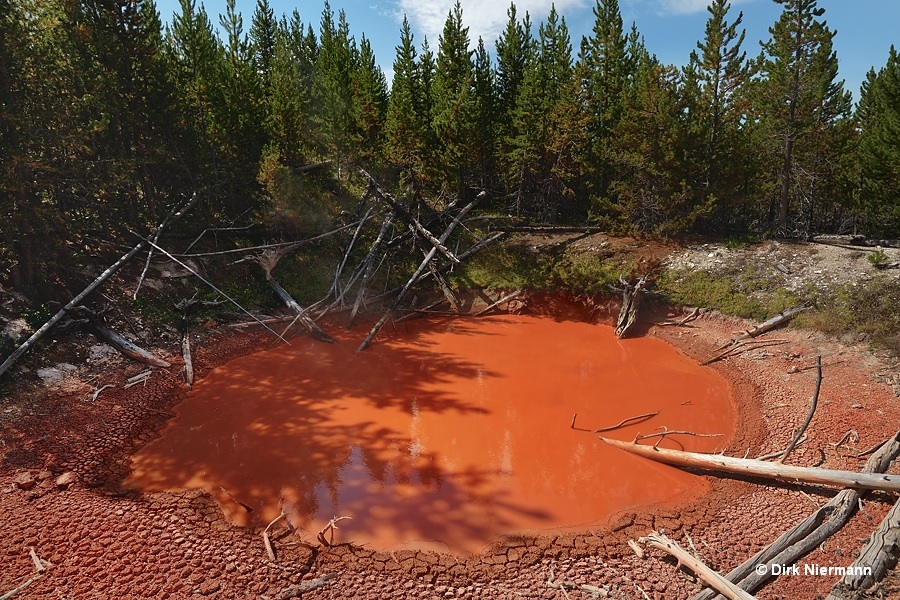
Again, the distance to the southermost and currently last orange pool is round about 50 m, but this time in southwestern direction. On the way you come across a quite large greenish spring, which is not listed in the RCN database. Not so many years ago, a visitor who before apparently got enthusiastic about cream of tomato soup could not restrain himself from calling it "Cream of Broccoli Pool".
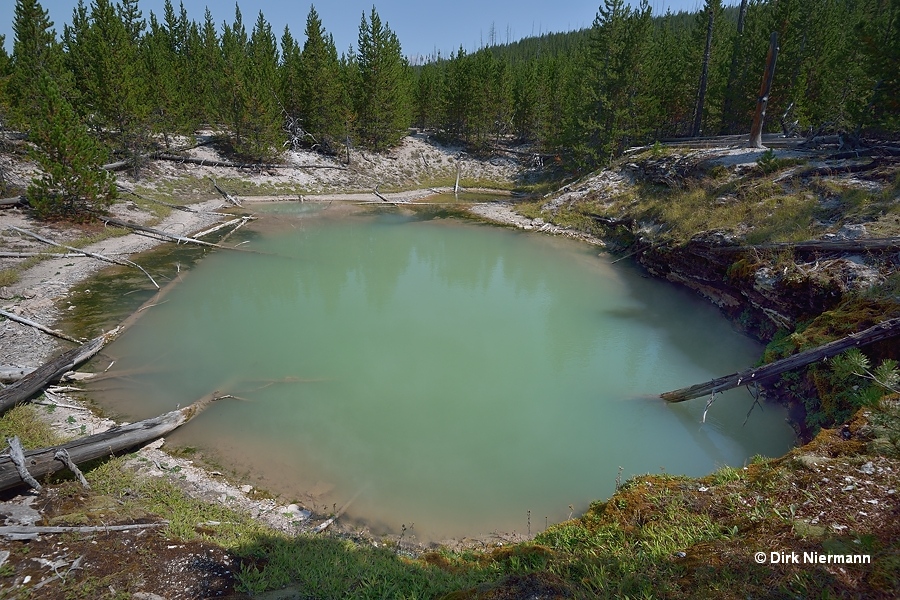
10 m (33 feet) west of "Cream of Broccoli Pool" the southernmost "Tomato Soup" shows up. As often in Yellowstone, it is very surprising that two springs in direct vicinity can be so different. This one is also the smallest one of the four orange pools. Here not only the color of the water, but even the reflections on the overhanging rim are amazing.
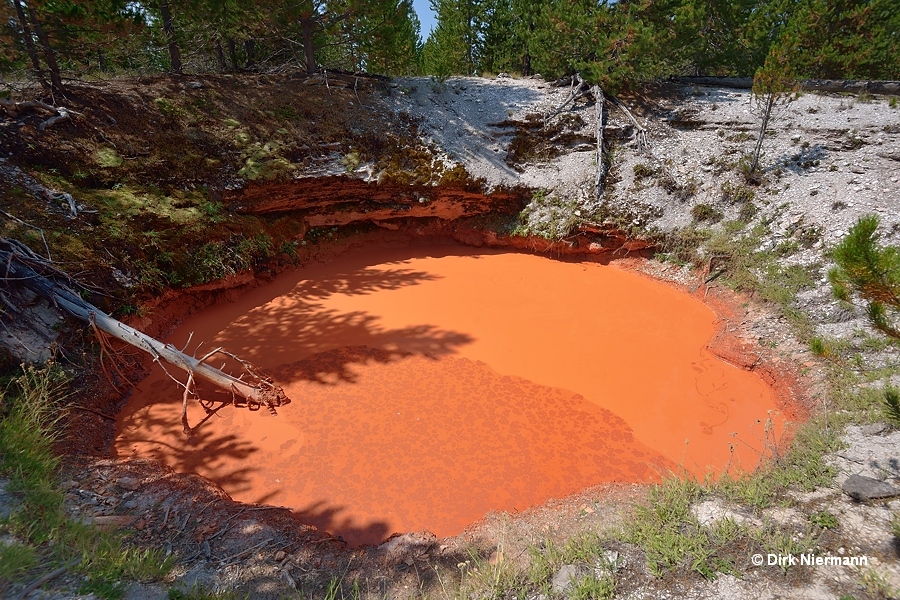
If you decide to proceed south, two further large features are to be discovered after approximately 100 m (330 feet). The first one is MNN034, a bluish clouded pool of moderate temperature around 75 °C (167 °F).
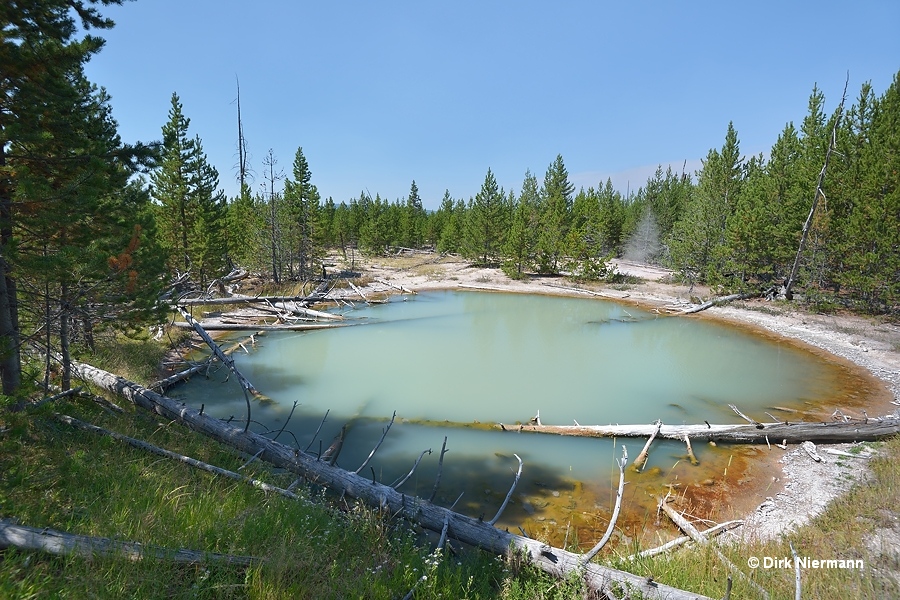
A few feet west of it the slightly boiling mud pot MNN023 appears. Traces of pinkish mud in the surroundings as well as in the trees indicate that its activity is not always that sluggish.
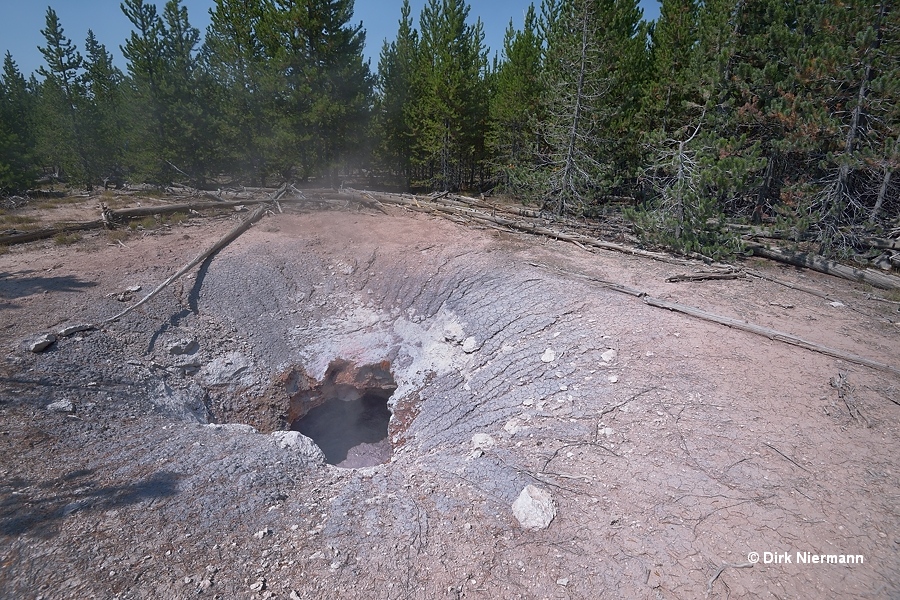
Even if here the southern end of the thermal area (actually a fracture line) is reached, it does not mean that no more springs are left. However, the remaining features are located some way northeast of MNN020, the first of the brick-red pools on this page. To see them, and most are definitely worth it, you have to retrace your steps or simply turn over to the next page.
Page 1 2